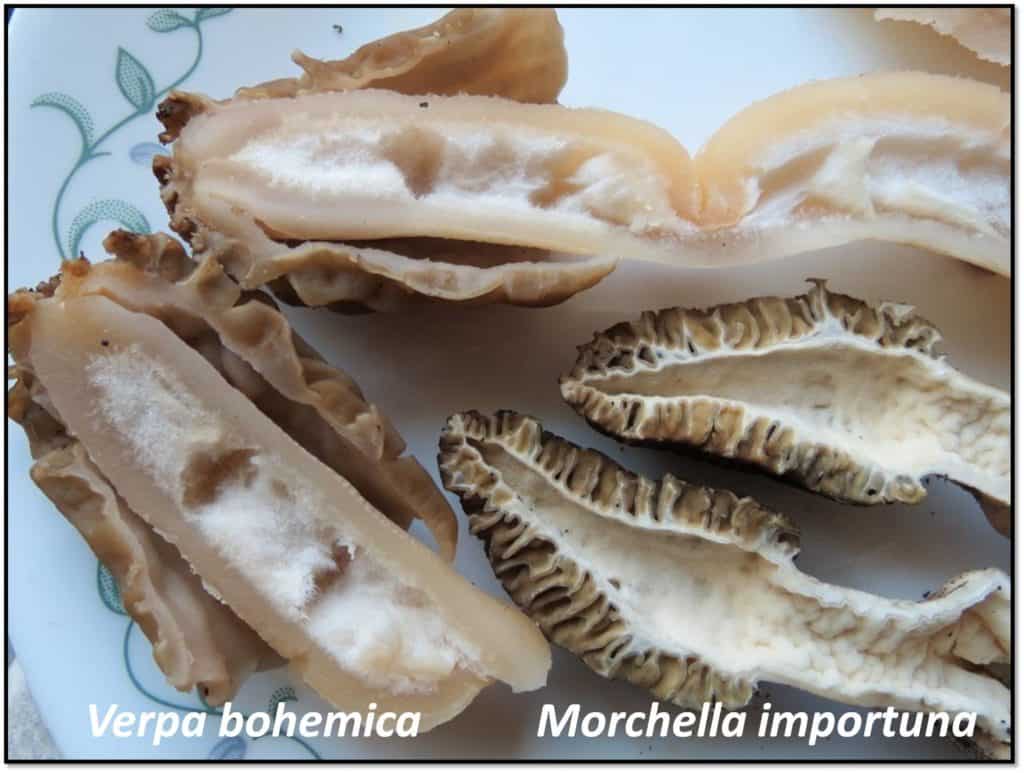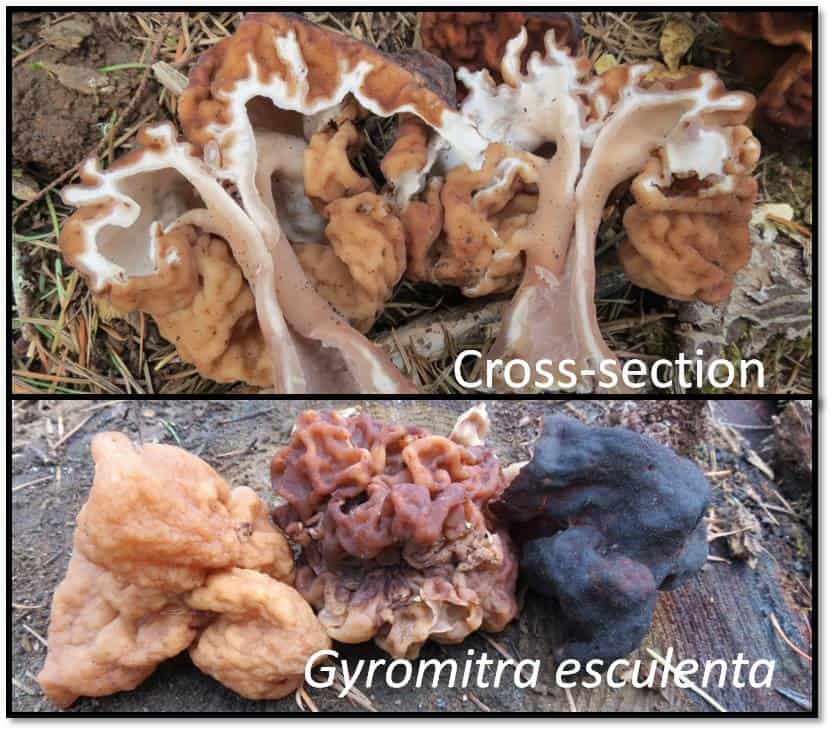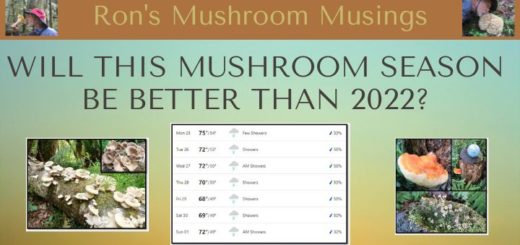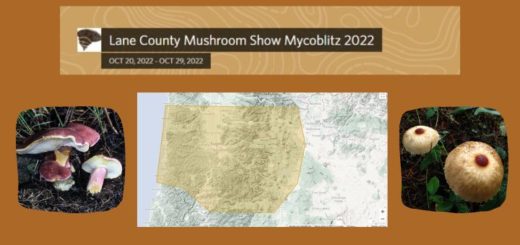Now streaming near you

Verpa typically has a bell-shaped cap with a wrinkly, brain-like appearance. The cap on some bohemica specimens can appear somewhat similar to its cousin the morel, both being in the fungal family Morchellaceae. From what I can ascertain, Oregon is actually home to two species in the genus Verpa; bohemica and conica. Verpa conica is listed as being a rarer find than bohemica and conica sports a more thimble like cap, giving rise to its common name of Thimble Fungus.

Both of these verpa species are described as “probably” being both mycorrhizal and saprobic at different points in their lifecycle. In Oregon verpa are generally found along and near waterways where cottonwood trees grow. While Verpa bohemica can take on a morel-like exterior look, the morel’s cap is seamlessly connected to its stem while verpa are only attached to the stem at the top of the cap. Not to contradict my last statement and make things more confusing but there is a half-free morel (Morchella populiphila) that fruits in Oregon. As its common name implies, it is attached to the stem halfway down the cap and is also mycorrhizal, or not, and fruits around black cottonwood trees.

The different cap connectivity between Verpa bohemica and a landscape morel Sandy found (Morchella importuna) can easily be seen by taking a closer look at a cross-section of the two mushrooms. The morel is depicted by an unbroken connectivity between cap and stem and its interior is hollow with no visible signs of any cottony pith. Conversely, Verpa bohemica is only attached to the stem at the very top of the cap and has an abundance of cottony pith in the stem’s interior. Additionally, the stem of a verpa is quite brittle whereas the stem of the morel is far more durable and will not break apart with normal handling.

I would be remiss if I didn’t include a few lines of text about another possible verpa/morel look-alike from the genus Gyromitra. Several years ago, Sandy and I visited a recently logged area and found hundreds of Gyromitra esculenta mushrooms just about everywhere. From a distance, we thought we had hit a jackpot of morel mushrooms only to be disappointed as we closed in on them. Much like verpas and morels that fruit in the spring, so do mushrooms in the genus Gyromitra. The exterior cap of Gyromitra esculenta can be quite variable but generally has a very convoluted brainy look. The interior of their stem can be hollow, take on compressed folds, or be completely or partially solid. Gyromitra esculenta also transitions from a light brown or tan color toward black as it ages. Fortunately, it is not considered a riparian mushroom as it fruits mainly in conifer forests here in Oregon. It does contain the toxin gyromitrin which decomposes in the stomach to form toxic hydrazines that affect the central nervous system. While these toxic compounds are water soluble and can be mostly remove by boiling, it is best to stay away from mushrooms in this genus. Some people do eat them and some are made very ill as a result.

Most websites also describe morels and verpas as being toxic when eaten raw and some people have had gastrointestinal distress even after cooking them. Sandy and I have eaten well cooked morels and verpas with no negative reaction and Sandy finds them to be quite yummy. She sill favors morels but will not pass up a dish of sautéed verpas. Dylan told Sandy he enjoys the flavor of cooked verpas over that of morels. I found them to be very steak-like in both flavor and texture and since I’ve never enjoyed eating steak, I do not care for either one.

Here is a picture of Sandy doing her verpa vs. landscape morel taste test. We each tried a few bites of verpa and morel and stored the rest in the refrigerator for later use in baked ziti. Actually, I placed the remaining verpa and morel mushrooms on Sandy’s half of the baked ziti and used frozen chanterelles on my half.
If you want to try your hand at finding verpas you need to act quickly as their season is almost over. Remember, these early spring mushrooms can be found near and along waterways where cottonwood trees grow. Our Willamette River Trail system right here in Eugene has many cottonwood trees along its banks (hint, hint). As a bonus, in Oregon you also have a chance of finding morels, typically the Yellow Morel (Morchella americana previously Morchella esculentoides) in the same area also around cottonwood trees. Think of it as a two-for-one mushroom hunting activity.
In any event, follow this well-deserved conventional wisdom for morels, verpas and generally any mushroom you eat for the first time; fully cook and only eat a small amount, wait 24 hours and see if you have a bad reaction to them. Also, avoid drinking alcohol during your test sampling as it can make a bad reaction even worse. And for safety’s sake, just avoid eating any mushrooms in the genus Gyromitra.
Happy hunting, Ron
References:
Morel Mushroom Toxicity: An Update – Fungi Magazine, Spring 2021
Image of Verpa conica courtesy of Dr. Timothy James, Joint Genome Institute





